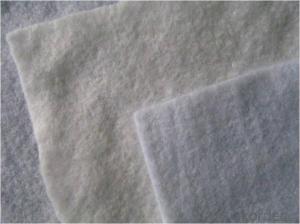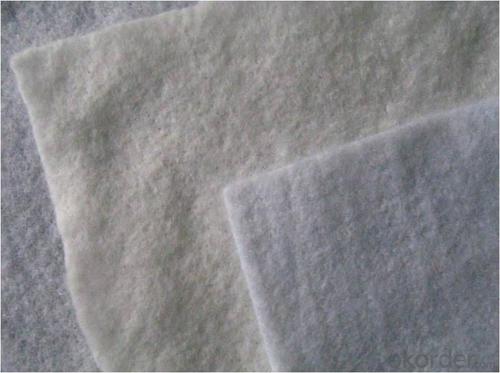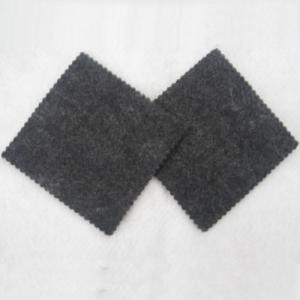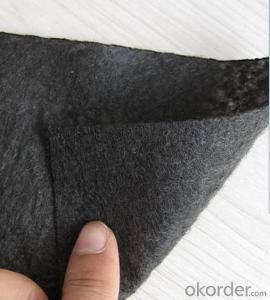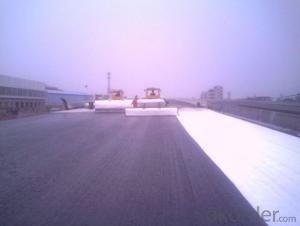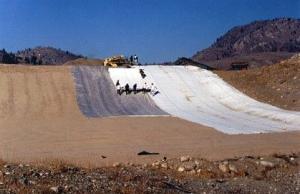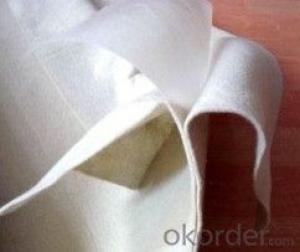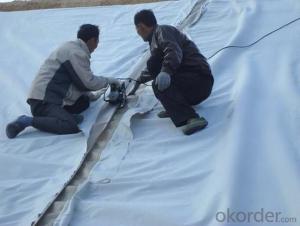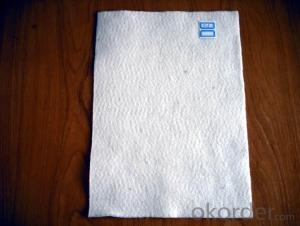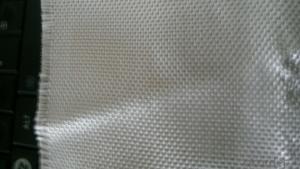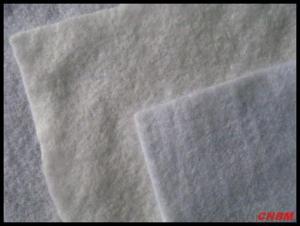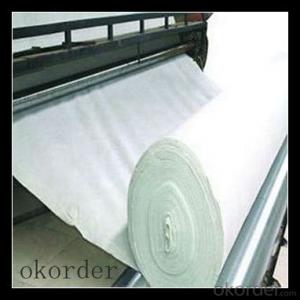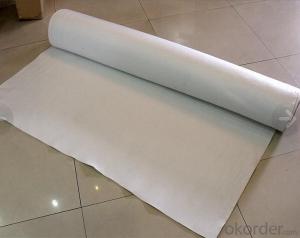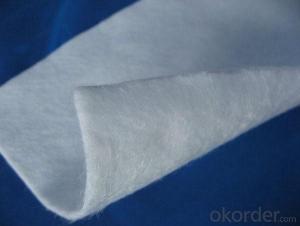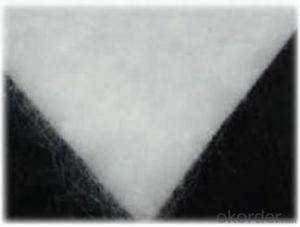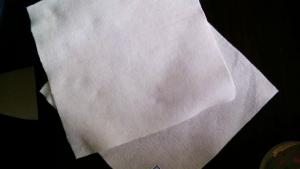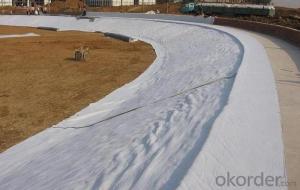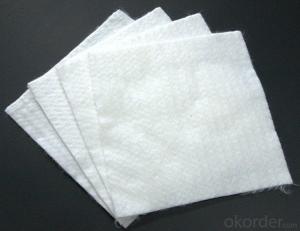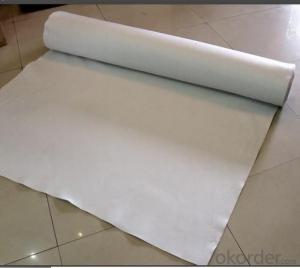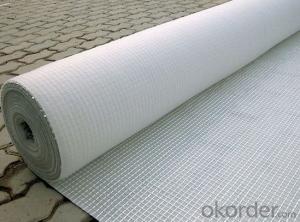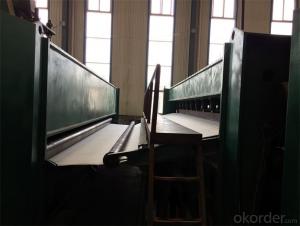Manta Geotextil Non-Woven Geotextile with Lightweight Compounding Silk-CNBM
- Loading Port:
- China main port
- Payment Terms:
- TT OR LC
- Min Order Qty:
- 6000 m²
- Supply Capability:
- 10000000 m²/month
OKorder Service Pledge
OKorder Financial Service
You Might Also Like
Specification
Detailed Images
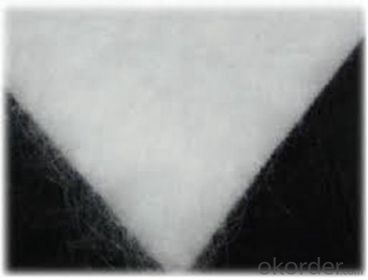
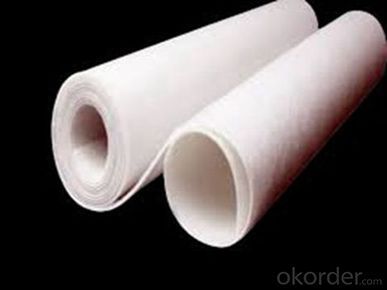
Filtration:
It can be the filtration layer of the dykes, river canal, seacoast, concrete slope, retaining walls. At the same time of preventing the clay granule from passing, it allows the water and the gas pass through freely.
Reinforcement:
The highway, railway, soil-stone dam, breakwater, airport, backfill soil of retaining wall, slope protection, etc in which distributes the earth stress, prevents the side-displacement of the earth body and improves the earthbody stability.
Our Service
Quality assurance
1.On a regular basis or as per your request,we entrust national testing agencies to conduct quality inspections
2. Strictly in accordance with the ISO9001-2008 international quality system standard,we monitor and manage the whole process throughout production,quality testing,and measurement to ensure product quality
3. For quality-related construction delay or substandard construction(except for damage or losses due to customer’s responsibility or irresistible natural disasters),we have refunding,replacement,and repair services.We will respond to customers’ feedbacks on quality issues within 24 hours.
After-sales service
1.In order to provide customers with comprehensive technical support,we will provide technical and other related information upon request in a timely manner.
2.In required,we will appoint specialized technicians to the construction site to give technical trainings to construction people,and offer technical guidance throughout the whole construction process.
3.For damage due to shipment and delivery,after we receive the complaint,we will check the issure through provided pictures and videos.If our responsibility is confirmed,we wil offer free replacement.
4.When the construction is completed,as your request,our technical staff may participate in the final acceptance.
FAQ:
Q: What kind of payments does jenor support?
A: T/T, L/C, Cash are accepted.
Q: Do you charge for the samples?
A: Accordeing to our company policy, the samples are free, we only charge the freight fee. And we will return the freight fee during the next order.
Q: Can you produce according to customers' design?
A: Sure, we are professional manufacturer, OEM and ODM are both welcome.
Q: Do you have other products?
A: Yes, please check the pictures:
Packaging & Shipping
Packing: PLASTIC FILM INSIDE, AND WOVEN BAG OUTSIDE
Shipping: About 15 days after receipt the deposit
geotextile fabric
permeability,filtration,easy for construction
ISO and CE certificate
Good quality and competitive price
- Q: Highway on the highway geotextile laying program who has ah?
- The specific construction program, ah, that depends on your specific project, but generally there is such a Hongxiang professional construction staff introduction We usually in the highway geotextile before the laying of the first sprinkle asphalt sticky oil, the amount of about 0.4 ~ 0.6kg / ㎡, and then shop geotextile, and then sprinkle a layer of geotextile in the same type of sticky oil, the amount of about 0.5 ~ 0.6kg / ㎡, also need to pay attention to the temperature when the contact. Geotextile laying before laying a layer of asphalt is to better play the role of anti-seepage, geotextile to adapt to the contact with the asphalt and other materials when the temperature, requiring a higher melting point. The asphalt impregnated geotextile into spray asphalt combined with oil, the geotextile firmly rolled in the above and then spray a thin layer of asphalt, increase the adhesion of the opposite layer, improve water resistance. If the use of paver laying asphalt concrete surface layer, can not spray surface layer of asphalt, only in the bottom to increase the amount of asphalt, control in 1000g / m2 or so. After rolling, the asphalt through its pores through the geotextile reverse osmosis to the surface layer, forming a sealed waterproof layer, but also play a role in reinforcement, improve the new layer of anti-fatigue performance. It is economical and durable.
- Q: Above a geotextile one, that there is any acceptance of norms?
- Geotextile with the relevant national standard, I am specializing in the production of geotechnical materials
- Q: Are geotextiles resistant to earthquakes?
- No, geotextiles are not inherently resistant to earthquakes. They are primarily used for erosion control, soil stabilization, and filtration purposes. While they can provide some reinforcement to the soil, their main function is not to withstand seismic activity.
- Q: Geotextile price specific how to develop?
- Each type of product in the market before the sale, the pricing will take into account all aspects of the factors, very strict and careful investigation, geotextile is also true. The first is the product quality is the second product specifications and standards to Hongxiang new material short wire geotextile, for example, sub-weight (80-1500g / ㎡), the quality standard is a requirement, divided into non-standard, by White A, Sinochem, ordinary GB, Paul GB, Dahua GB and so on. Ton price is generally between 4900-7500 yuan / ton, but the weight <200g, an increase of 100 yuan / ton; weight> 800g, an increase of 500 yuan / ton. 187 & lt; 6600 & lt; 5604
- Q: How do geotextiles help with soil stabilization in slope stabilization projects?
- Geotextiles assist in soil stabilization in slope stabilization projects by providing reinforcement and erosion control. These specialized fabrics are placed within the soil structure to enhance its strength, prevent erosion, and promote proper water drainage. By distributing loads and reducing soil movement, geotextiles help maintain the stability of slopes and prevent potential landslides or soil erosion.
- Q: GB waterproof geotextile what price
- The price of Guobao waterproof geotextile is calculated according to the weight per square meter. For more information, please contact us.
- Q: How are geotextiles used in shoreline protection?
- Geotextiles are used in shoreline protection to stabilize and reinforce the soil, preventing erosion and maintaining the integrity of the shoreline. They are typically installed as a barrier between the soil and water, acting as a filter to allow water to pass through while retaining the soil. This helps to reduce wave energy and promote sediment accumulation, ultimately protecting the shoreline from erosion caused by currents, tides, and storms.
- Q: Can geotextiles be used for filtration purposes?
- Yes, geotextiles can be used for filtration purposes. They are designed to allow water or other liquids to pass through while retaining soil or other particles, making them effective for various filtration applications in areas such as agriculture, construction, and environmental engineering.
- Q: Where to sell waterproof geotextile
- Building materials market should have hope to help you
- Q: Concrete maintenance with geotextile, Tonglu how to buy
- Huazhi geotextile material manufacturers
Send your message to us
Manta Geotextil Non-Woven Geotextile with Lightweight Compounding Silk-CNBM
- Loading Port:
- China main port
- Payment Terms:
- TT OR LC
- Min Order Qty:
- 6000 m²
- Supply Capability:
- 10000000 m²/month
OKorder Service Pledge
OKorder Financial Service
Similar products
Hot products
Hot Searches
Related keywords
